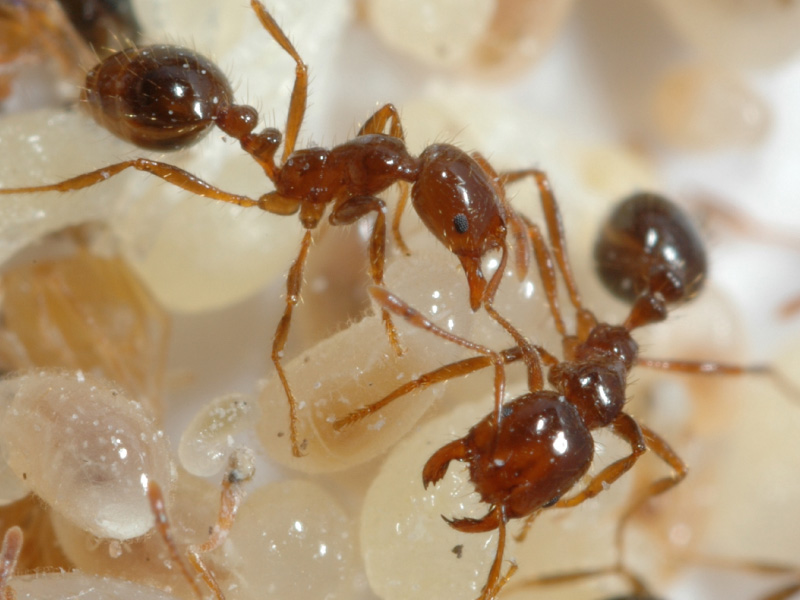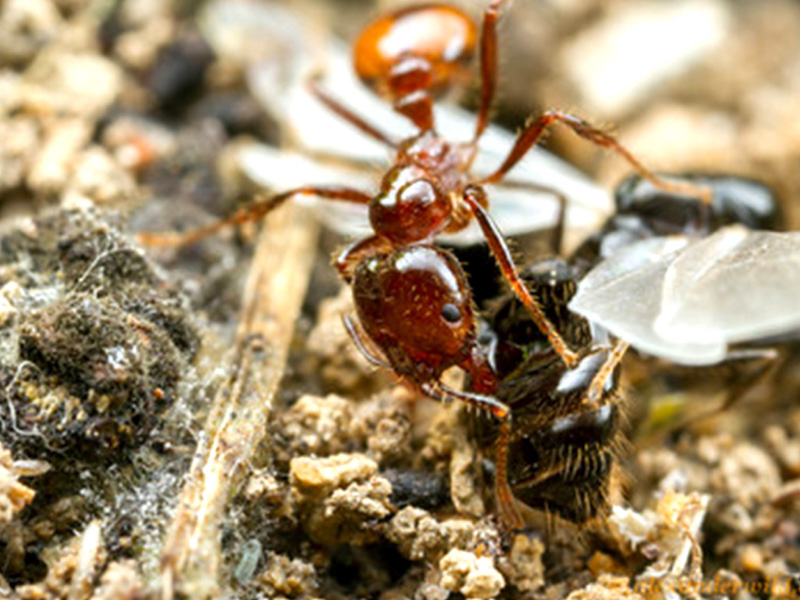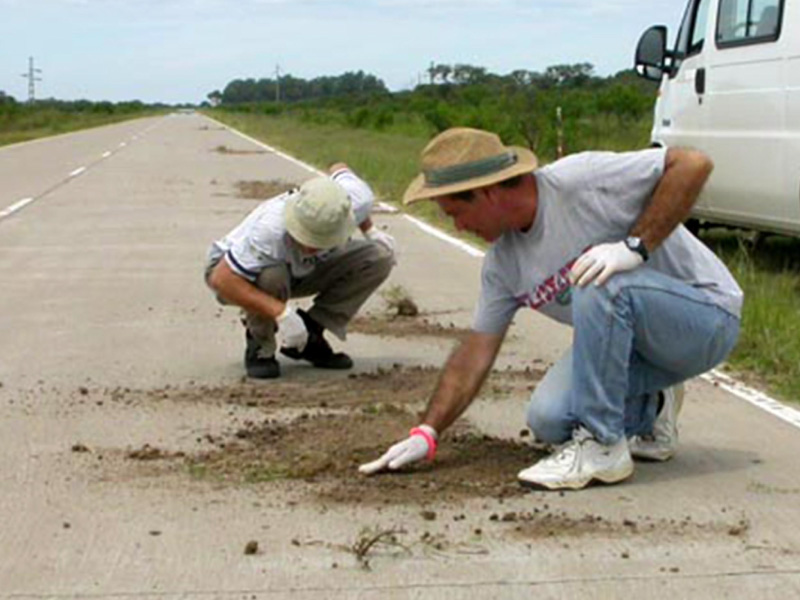20 May Solenopsis invicta, S. richteri (Fire ants)
Solenopsis invicta, S. richteri (Fire ants)
The population density of fire ants in southern South America is several times lower than in the areas where they have been introduced: southern USA, Puerto Rico and California, Arizona and New Mexico. This species affects agriculture, wildlife and human populations, and causes a yearly 6-billion dollar damage in the US alone.
Over the past decade fire ants have become a global pest, with new introductions originating in the US that settled in Australia, Taiwan, mainland China, Mexico and the Caribbean islands. Parasitoids and pathogens from Argentina are being used to try to reduce their abundance in invaded sites to levels similar to those in South America. However, there are other factors, such as their higher competitive ability, that contribute to their success as invaders. The objectives of this project are (1) to continue with the release of pathogens and parasitoid flies from Argentina in the US, (2) to continue the search for new pathogens using genomic tools, (3) to study the evolution of the supergen (Gp-9) that determines that one species has one (monogyny) or more (polygyny) queens per colony in South American fire ants and (4) to perform a molecular phylogenetic analysis of parasitoid flies to understand the relationship between their species and delimit new cryptic species in order to select the most suitable genotypes for the control of each pest fire ant
Staff:
Luis Calcaterra
Andrés Sanches Restrepo
Cooperators:
R. Vander Meer, David Oi y Steven Valles, CMAVE, ARS-USDA; Dietrich Gotzek, Smithsonian Institution; DeWayne Shoemaker, Universidad de Tennessee, Marcos Pesquero, Universidad de Morrinhos, Brasil.



